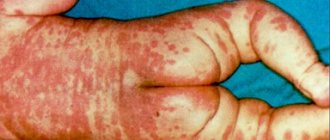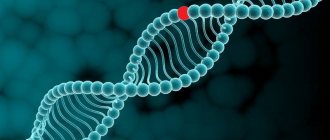Acetone syndrome is a condition characterized by an increase in ketone bodies in the blood due to metabolic disorders in the child’s body, primarily carbohydrate and fat metabolism. Ketone bodies are a group of specific substances that are normally synthesized in small quantities in the liver and are a kind of “spare fuel” for the body. However, in the presence of metabolic disorders, during carbohydrate starvation, the production of ketone bodies increases, which leads to their accumulation in the blood, as well as to massive release of ketones in the urine.
This pathology is not an independent disease, but is a symptom complex that can accompany or be one of the manifestations of the underlying disease or exist independently, without the presence of a background disease.
This syndrome can be detected in children of any age category, but is more often registered before the age of 12–13, more often in girls. However, it is worth saying that in the presence of an underlying disease, acetonemic syndrome can be detected at any age, and there is no correlation with the gender of the child. Recently, the relevance of this topic in pediatric practice is increasing every year, as the frequency of cases of detection of this pathology increases.
What causes acetone syndrome in children?
Causes of acetone syndrome: glucose deficiency; overeating and prolonged fasting; emotional and physical overload; infectious and somatic diseases; development of tumor processes. Predisposing diseases:
- decompensated diabetes mellitus;
- Itsenko-Cushing's disease;
- toxic liver damage;
- insulin hypoglycemia;
- toxicosis caused by infections;
- hyperinsulinism;
- leukemia;
- thyrotoxicosis.
If acetone syndrome is suspected in a child under 4 years of age, a doctor is called to the home. If necessary (with the help of emergency specialists), they are hospitalized.
Tests: ketones in urine
In a clinical urine test, the presence of ketones is determined from 1 plus (+) to 4 (++++). If ketones are 1 or 2 plus, the child may be left to be treated at home. 3 pluses mean an increase in the level of ketone bodies in the blood by 400 times, and 4 pluses - by 600 times. In these cases, hospitalization in a hospital is necessary. Large amounts of acetone are dangerous for the development of coma and brain damage. With proper and timely treatment, all symptoms subside on days 2-5 of the disease.
In any case, if you have any doubts about the origin of the illness (the condition is similar to other infections), call a pediatrician at home. Ambulance Genesis will promptly ensure the arrival of a pediatric ambulance team at your address at any time of the day or night.
We are ready to support you in difficult times!
Symptoms and clinical picture of acetonemic syndrome in children
Characteristic manifestations of acetone syndrome in children include: the smell of acetone in the exhaled air, vomiting repeated many times during the day, dehydration (pallor of the skin, adynamia, muscle hypotension). You can suspect that a child has this condition based on the following signs:
- increased excitability;
- rapid exhaustion of the nervous system with well-developed speech and memory;
- thin build.
General symptoms of acetone syndrome: moodiness, excessive fearfulness, neuroses, tearfulness, restless sleep, poor appetite, attacks of nausea, migraines, convulsions, high fever, diarrhea, constipation.
Why does an attack occur?
In order to understand where acetone comes from in the body, you need to digress a little from the description of the disease itself and make a short excursion into the physiology of nutrition.
All our organs and tissues require energy to grow and function properly. Normally, for the cells of almost all organs and tissues, the main source of energy is carbohydrates, or rather glucose. The body receives it from all carbohydrates supplied with food - starch, sucrose, fruit sugar and others. However, under stress, under conditions of starvation, during illness and in some other cases, carbohydrates alone as glucose suppliers become insufficient. Then the body begins to obtain glucose through metabolic transformations from fats. And in extreme cases, when fat reserves are depleted, proteins also begin to be consumed (in children, to the great joy, this happens very rarely, in extreme cases). Well, good, you say. If there is something to replace the lack of carbohydrates, then what difference does it make? And the difference lies precisely in the fact that carbohydrates are directly intended to be suppliers of glucose - they are broken down only to form glucose and sometimes water. But during the synthesis of glucose from fats, a mass of intermediate and by-products is formed - the so-called ketone bodies, which include acetone, acetoacetic acid and β-hydroxybutyric acid. A small amount of ketone bodies is formed under normal conditions; they are a source of energy for the brain and nervous tissue, but under conditions of the development of acetonemic syndrome, their concentration increases to 400-600% of normal concentrations.
Scientists believe that the cause of the development of acetonemic syndrome is a disruption in the functioning of certain parts of the brain - the hypothalamus and pituitary gland, which are responsible for the endocrine system, especially for the correct metabolism of carbohydrates and fats. There are many reasons - this is the pathology of pregnancy and childbirth, when the fetus and its nervous tissue experience oxygen deficiency, hereditary factors, metabolic disorders in the body of the baby, stress, infections and others.
Any condition that provokes the development of vomiting is stressful for the toddler’s body. And under stress, many hormones begin to be released (for example, glucagon, adrenaline and others), which activate the breakdown of carbohydrates, and their reserves are very limited. They last for several hours; as soon as they are used up, they switch to fats to meet the body’s needs. Then the body begins to produce a lot of ketone bodies, they do not have time to be burned by nerve cells, they begin to accumulate in the baby’s body, enter the blood, spread throughout the body, having a toxic effect on the central nervous system, kidney tissue, pancreas, liver and other organs. Of course, the body tries to fight, intensively removing ketones through urine and vomit, exhaled air and even the skin. That is why, where the sick baby is, the characteristic smell of acetone is felt, as doctors figuratively say, it smells like “rotten fruit.”
Ketones cause very adverse effects in the child’s body - so-called metabolic acidosis occurs, that is, acidification of the internal environment of the body. Which causes malfunctions in all organs. In order to somehow help the body, the system of increased breathing is turned on, and blood flow to the lungs increases. But the flow to other organs and the brain decreases. Ketones act directly on brain tissue, causing drug-like effects, including coma. Therefore, children become lethargic and inhibited. And given that acetone is a good solvent, it also disrupts the integrity of the fatty membrane of the body’s cells. Due to irritation of the mucous membranes of the stomach and intestines by ketone bodies, abdominal pain and vomiting occur.
Diagnostic methods
Diagnosis of acetone syndrome in children is carried out using laboratory and instrumental studies.
The following tests are prescribed for acetone syndrome:
- tests for uric acid levels in the blood;
- blood chemistry;
- urine test for glucose;
- bacteriological and virological analysis of urine and feces;
- blood and urine tests for pancreatic enzymes;
- urine and blood test for acetone.
Echocardioscopy and ultrasound of the pancreas are also performed.
First aid at home:
- The child's menu requires revision. Exclude: broths from meat, fish and mushrooms, “young” and fatty meat, offal, fermented milk products, legumes, chocolate, citrus fruits, drinks with caffeine or gas
- Frequent fractional drinking in small portions (sweet compote, uzvar, alkaline drink without gas “Borjomi”, “P. Kvasovaya”)
- Sorbents.
- Enema with 2 percent soda solution
- Attempts to feed and water the child provoke increased vomiting, so consultation with a pediatric gastroenterologist is important to determine further tactics for managing the child.
Does your child need help? Consult a medical specialist and receive timely professional help!
Basic treatment methods and contraindications
You can stop an attack (mild to moderate severity) at home with the help of a glucose drug. If vomiting occurs, it is necessary to cleanse the intestines and start feeding the child. Drug treatment includes the use of Regidron, Enterosgel, Drotaverine.
Secondary acetone syndrome is treated by eliminating its cause and treating the underlying disease. Self-medication is not allowed - only a doctor should make prescriptions.
In a hospital setting the following are prescribed:
- drugs for neutralizing ketone bodies (hepatoprotectors and lipotropic drugs);
- sedatives to normalize the functioning of the central nervous system;
- medicinal baths, massage.
What to do during interictal periods?
Usually, all measures taken by doctors and parents are aimed at reducing the number of attacks and preventing exacerbations of the disease. Usually the doctor recommends at least two preventive courses of treatment per year, preferably in the off-season - in autumn and spring.
To help a baby with such a disease, you need to almost completely reconsider the child’s lifestyle. The basis of prevention is, no matter how trivial it may sound, a healthy lifestyle. This includes, of course, regular and fairly long stays in the fresh air, and it is better to combine it with outdoor games and sports. Regular and dosed physical activity leads to normalization of carbohydrate and fat metabolism, but it is important not to overdo it, as overwork can provoke attacks. Be sure to include water procedures in your daily routine - baths, contrast showers, dousing your limbs or the whole body. These procedures train the body, strengthen the baby and normalize metabolism. A baby needs at least 8-10 hours of sleep every day, and preschoolers need a mandatory nap during the day. You should avoid prolonged exposure to the sun and be sure to sharply reduce watching TV and working with the computer.
Protect your child from infectious diseases - such children are recommended to receive all preventive vaccinations according to the vaccination calendar, and if they go to kindergarten, additional ones.
Chronic diseases of the digestive system and other systems can impair the digestion and absorption of nutrients. As a result, there is an increase in the use of fat reserves, and this leads to the accumulation of ketone bodies in the blood.
In your diet, limit foods rich in fats and ketone-containing foods. However, doctors say that you shouldn’t completely remove fats from the diet; they are needed for the baby’s growing body - they are used to build cell membranes. Difficult-to-digest fats such as pork, lamb, as well as dishes such as cakes and cream pies, duck, rich broths should be completely excluded. But do not remove fats from the diet completely, they must be limited, and two-thirds replaced with vegetable oils - sunflower, olive, mustard. The ratio of proteins, fats and carbohydrates should be in the ratio: 1: 1: 4. It is worth sharply limiting the meat of young animals and poultry, fatty meats, smoked products, offal, sorrel, rhubarb, cauliflower, tomatoes, oranges and bananas in the diet , drinks containing caffeine and soda.
Preference in nutrition should be given to a vegetable-dairy diet; lactic acid products, cereals, fresh vegetables and fruits are almost always needed. Cottage cheese, lean fish, oatmeal, vegetable oil, which can facilitate the absorption of animal fats, are good for normalizing metabolism, and in moderate quantities it can be given to the child in combination with vegetables - in salads and vinaigrettes.
For children with acetonemic syndrome, there is a rule in preparing a diet - “fats burn in the flame of carbohydrates.” This would mean that fats can only be given in combination with carbohydrates. Put butter in porridge or vegetable stew, fried cutlets can only be with vegetable or cereal side dishes, sour cream in vegetable soup, vegetable or cereal casserole. When developing a diet, you need to take into account the individual tastes and characteristics of the baby; parents quickly notice which foods make the baby feel worse, and exclude them or strictly limit them. The first time may be a little difficult, but over time both you and the baby will get used to the new style of eating.
Advertising
Prevention measures
Measures to prevent acetone syndrome in children:
- exclusion of psycho-emotional and physical stress;
- outdoor recreation;
- hardening and water procedures;
- balanced fortified diet;
- exclusion from the diet of fatty, smoked, canned foods, legumes;
- Spa treatment;
- for symptoms of increased acetone, take sweets;
- Monitor the level of acetone in urine using test strips.
Prevalence
AS is a disease predominantly of childhood, manifested by stereotypical repeated episodes of vomiting, alternating with periods of complete well-being. More often occurs in children of the first years of life. The prevalence of AS is poorly understood. AS affects 2.3% of Austrians, 1.9% of residents of Scotland. In India, AS accounts for 0.51% of all pediatric ward admissions. According to Russian literature, primary AS occurs in 4–6% of children aged 1 to 13 years. AS is more often registered in girls. The average age of onset of AS is 5 years. 50% of patients with this pathology require hospitalization and intravenous fluid administration. The average annual cost of examination and treatment of one patient with this pathology in the USA is 17 thousand dollars.
Infusion therapy
Indications for prescribing infusion therapy:
- Persistent repeated vomiting that does not stop after the use of prokinetics;
- The presence of hemodynamic and microcirculation disorders;
- Signs of impaired consciousness (stupor, coma);
- The presence of moderate (up to 10% of body weight) and severe (up to 15% of body weight) dehydration;
- The presence of decompensated metabolic ketoacidosis with an increased anion gap;
- The presence of anatomical and functional difficulties for oral rehydration (anomalies of the facial skeleton and oral cavity), neurological disorders (bulbar and pseudobulbar).
Before starting infusion therapy, it is necessary to ensure reliable venous access (preferably peripheral), determine hemodynamics, acid-base and water-electrolyte balance.
Content
- 1 Prevalence
- 2 Classification
- 3 Etiology
- 4 Pathogenesis
- 5 Clinic
- 6 Diagnostics 6.1 Laboratory diagnostics
- 6.2 Functional diagnostics
- 8.1 Main directions of treatment of non-diabetic ketoacidosis in children
Dietary recommendations
Products that are strictly excluded from the diet of children suffering from acetone syndrome:
- kiwi;
- caviar;
- sour cream - any;
- sorrel and spinach;
- young veal;
- offal - lard, kidneys, brains, lungs, liver;
- meat - duck, pork, lamb;
- rich broths - meat and mushroom;
- vegetables - green beans, green peas, broccoli, cauliflower, dry legumes;
- smoked dishes and sausages
- You will have to give up cocoa and chocolate in bars and drinks.
The diet menu must include: rice porridge, vegetable soups, mashed potatoes. If symptoms have not returned within a week, you can gradually add dietary meat (not fried), crackers, herbs and vegetables.
The diet can always be adjusted if signs of the syndrome return again. If you have bad breath, you need to add a lot of water, which you need to drink in small portions.
- On the first day of the diet, you should not give your child anything other than rye bread crackers.
- On the second day, you can add rice water or dietary baked apples.
- If you do everything correctly, then by the third day the nausea and diarrhea will go away.
Under no circumstances should you stop the diet if your symptoms go away. Doctors recommend strictly adhering to all its rules. On the seventh day, you can add biscuits, rice porridge (without oil), and vegetable soup to your diet. If the body temperature does not rise and the smell of acetone has disappeared, then the baby’s diet can be made more varied. You can add lean fish, vegetable puree, buckwheat, and fermented milk products.
Pathogenesis
Under physiological conditions, the catabolic pathways of carbohydrates, proteins and fats intersect at a certain stage in the Krebs cycle, a universal source of energy in the body:
- Carbohydrates, passing through the Embden-Meyerhoff glycolytic pathway, are converted into pyruvate, which is burned in the Krebs cycle;
- Proteins are broken down into amino acids by proteases:
Aspartic acid, tyrosine and phenylalanine serve as sources of oxaloacetate and/or pyruvate; Alanine, serine and cysteine are converted to pyruvate; Leucine, tyrosine and phenylalanine are converted into acetyl-Coenzyme A (acetyl-CoA);
- Fats are converted into acetyl-CoA by lipolysis. Under physiological conditions, the main pathway of acetyl-CoA metabolism is its reaction with oxaloacetate and further participation in the Krebs cycle with the release of energy. Part of acetyl-CoA is used for the resynthesis of free fatty acids and cholesterol synthesis, and the remaining small part is used for the synthesis of ketone bodies.
So, the triggering factors for the development of ketosis are stress (relative predominance of counter-insulin hormones) and nutritional disorders in the form of fasting or excessive consumption of fatty and protein foods (ketogenic amino acids) with a lack of carbohydrates. Absolute or relative carbohydrate deficiency stimulates lipolysis to meet the body's energy needs. Enhanced lipolysis leads to the fact that too many free fatty acids enter the liver, which are transformed there into a “universal metabolite” - acetyl-coenzyme A (acetyl-CoA), the entry of which into the Krebs cycle is limited due to a decrease in the amount of oxaloacetate (caused by deficiency carbohydrates). In addition, the activity of enzymes that activate the synthesis of cholesterol and free fatty acids decreases. As a result, there is only one way to utilize acetyl-CoA - the synthesis of ketone bodies (ketogenesis).
At the first stage, by condensation of two molecules of acetyl-CoA, acetoacetyl-CoA is created, which is metabolized to acetoacetic acid, which, in turn, is easily transformed into other types of ketone bodies - beta-hydroxybutyric acid and acetone. (The synthesis scheme is indicated in the article Ketone bodies).
Ketone bodies (acetoacetic, beta-hydroxybutyric acid and acetone) are either oxidized in tissues (skeletal muscles, myocardium, brain) to carbon dioxide and water, or are excreted unchanged from the body by the kidneys, lungs and gastrointestinal tract. Thus, ketosis develops in cases where the rate of synthesis of ketone bodies prevails over the rate of their utilization.
- Ketosis develops when a child is exposed to a number of adverse effects. With a significant increase in the level of keto acids, which are anion donors, metabolic acidosis occurs. In addition, ketone bodies, having an acidic pH, take up the body’s alkaline reserve for neutralization. Metabolic acidosis develops with an increased anion reaction - ketoacidosis. Its compensation is carried out due to hyperventilation (respiratory alkalosis), which leads to hypocapnia (“carbon dioxide is washed out”), which leads to vasoconstriction (vasoconstriction), including the vessels of the brain.
- An excess of ketone bodies has a narcotic effect on the central nervous system, up to the development of a coma.
- Acetone, being an organic solvent, damages the lipid bilayer of cell membranes (dissolves fats).
- In addition, the utilization of ketone bodies requires additional amounts of oxygen, which increases the discrepancy between oxygen delivery and consumption - contributing to the development and maintenance of the pathological condition.
- Excess ketone bodies irritate the mucous membrane of the gastrointestinal tract, which is clinically manifested by vomiting and abdominal pain.
The listed adverse effects of ketosis in combination with other disorders of water-electrolyte and acid-base balance (dehydration, metabolic acidosis as a result of loss of bicarbonate and/or accumulation of lactic acid) contribute to a more severe course of the disease and prolong the length of hospitalization in intensive care units.










